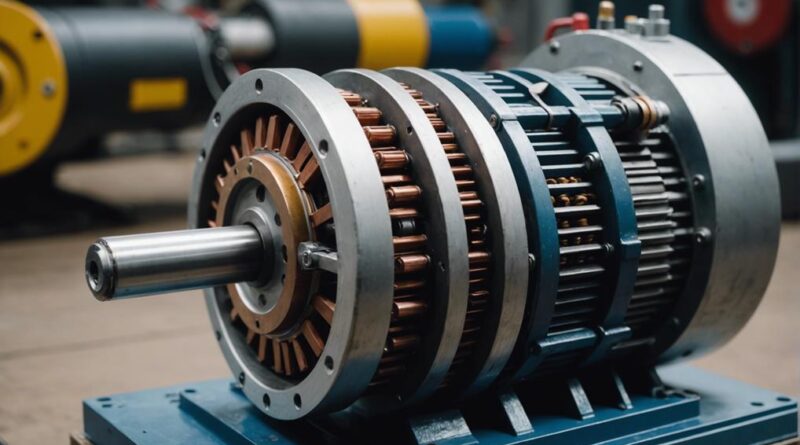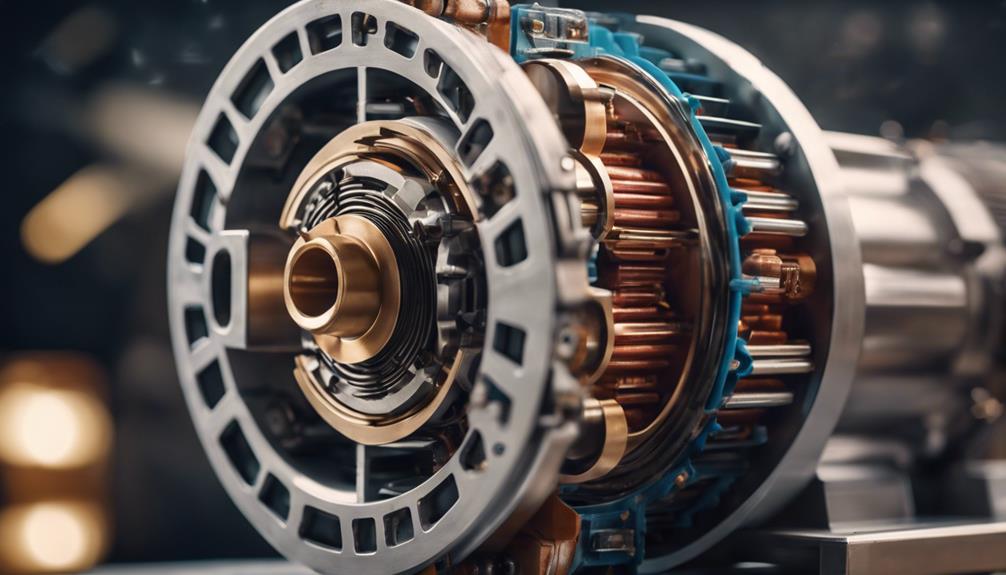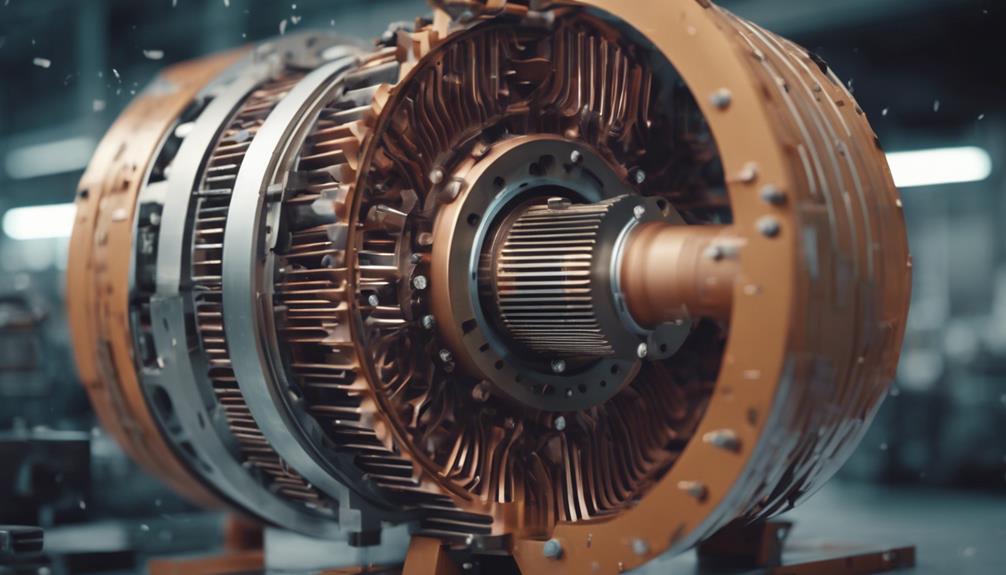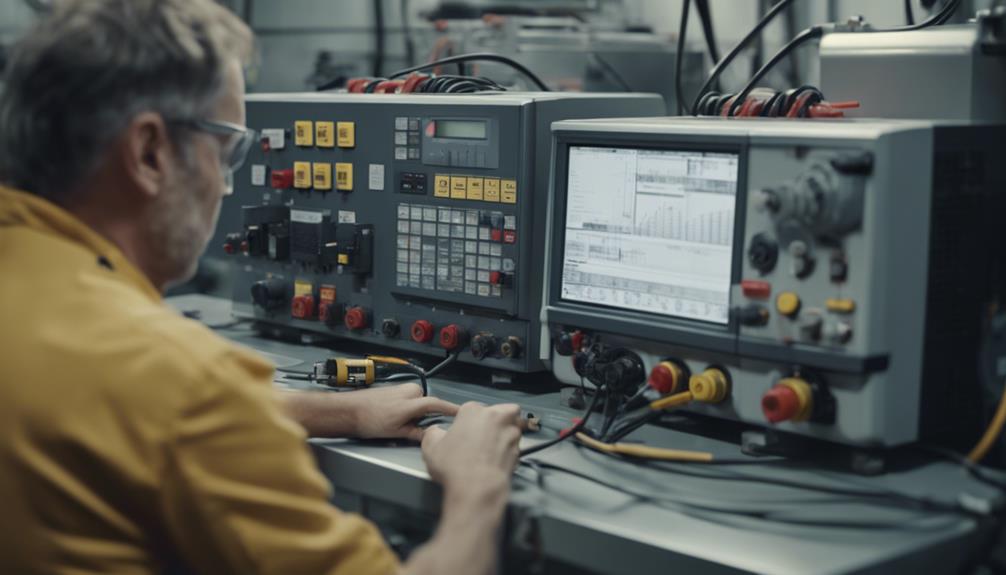
You have probably come across the term ' drag ' in relation to Induction Motors but understanding its impact on efficiency and operational consistency is important. This phenomenon, where the engine runs at a fraction of the design speed, is not just a nuisance, but a symptom of underlying problems such as harmonic interference and mechanical resonance. They can significantly improve engine performance by identifying and resolving these root causes using strategies such as load matching and installing variable frequency drives (VFDs). Consider how deeper investigation into the causes and solutions for engine creep could benefit your operation.
The central theses
- Creep in induction motors occurs at about one-seventh of their normal speed, resulting in slow and unstable operation.
- The root cause is harmonic imbalances in power generation and supply that affect speed.
- This phenomenon leads to increased energy consumption and higher operating costs.
- Creep diagnosis requires electrical testing and vibration analysis to detect inconsistencies and anomalies.
- Mitigation strategies include installing variable frequency drives (VFDs) and regular maintenance to improve efficiency and control.
Understanding Motorized Tracking

Motor creep occurs when an induction motor runs at a significantly reduced speed, typically about one-seventh of its normal speed. This phenomenon can have a significant impact on the performance and efficiency of your engine. Understand Speed Regulation and Harmonic Analysis Keeping this in mind can help mitigate some of the effects of tracking.
Speed control of an induction motor is essential to maintain a constant speed despite different load conditions. However, this control fails during tracking because the engine is at a lower, more stable speed . You'll probably notice this if your engine isn't responding properly to load changes and is sluggish despite adjustments.
Harmonic analysis, on the other hand, examines the frequencies generated by the engine. When crawling, certain harmonic frequencies become more dominant. These frequencies are typically multiples of the motor frequency. fundamental frequency and can do this Creep effect . By analyzing these harmonics you can determine which ones are contributing to the problem.
Essentially, if you experience motor tracking Understanding and adjusting your speed control settings combined with a full harmonic analysis may be your best option for counteracting this undesirable behavior . This approach ensures optimal performance of your engine and avoids unnecessary delays.
Causes of the creep phenomenon
Why does your induction motor start to shake? Several factors contribute to this phenomenon. It occurs mainly due to specific interactions within the engine and its power supply that create conditions that favor reduced speed stability. If you understand this, you can contain the problem effectively.
Here are some main causes:
- Harmonic generation: Your motor may have harmonic frequencies generated by the power supply or other connected devices. These non-fundamental frequencies interact with the engine's natural frequencies, resulting in non-uniform speeds and fluency.
- Imbalance in supply: If your engine's power supply is unbalanced, it will not work perfectly. Voltage fluctuations can cause the motor to no longer operate synchronously with the applied mains frequency, leading to a creep effect.
- Poor torque development: Under certain loads, the engine cannot develop sufficient torque throughout its speed range. This insufficient development of torque, especially at about 1/7 of the motor's synchronous speed, can lead to creep.
- Mechanical resonances: Sometimes mechanical problems can occur in the engine, such as: B. Unbalanced rotors or misaligned parts can cause resonance at certain speeds. This resonance can increase the creep phenomenon as the engine stabilizes under these conditions.
By taking these factors into consideration, you can significantly reduce the occurrence of creeping noises in your engine.
Effects on engine performance

Creep significantly reduces engine efficiency and can lead to increased energy consumption and higher operating costs. When your induction motor is forced to crawl, it will not reach its intended maximum speed, but will run at a lower, more unstable speed, usually around 1/7 of its synchronous speed. This phenomenon affects engine efficiency and contributes to speed fluctuations, which can negatively affect processes that depend on constant engine operation.
The direct effects of tracking are complex. Here is a simple analysis in table form to clearly illustrate the impact:
| Effects on engine performance | follow |
|---|---|
| Reduced engine efficiency | Higher electricity consumption leads to higher electricity bills |
| Greater speed variability | Inconsistent performance, possible process interruptions |
| Increased operating costs | Need for more frequent maintenance, potential premature wear |
As you can see, a malfunctioning engine is not just an annoying noise, it also has knock-on effects that affect your wallet and your productivity. Pay attention to these signs because they are the first indication that something is wrong. Remember: Troubleshooting your engine early can save you a lot of hassle and money in the long run.
Diagnostic techniques
To effectively resolve your induction motor's creep problem, it is important to use several diagnostic techniques. Identifying creep symptoms early can prevent many problems and ensure that your engine runs efficiently. You need to know the common signs and best troubleshooting steps to accurately diagnose the problem.
Here are some important diagnostic techniques to consider:
- Visual inspection : Look for any visible damage or unusual wear on the engine. This includes checking the rotor and stator for signs of misalignment or mechanical failure.
- Electrical testing : Use tools such as a multimeter or clamp meter to measure voltage and current values. This helps detect inconsistencies that could indicate tracking.
- Vibration analysis : Perform vibration analysis to detect abnormalities in engine operation. High levels of vibration can be a clear indication of creep.
- Performance Monitoring : Continuously monitor engine performance data for sudden drops in power or speed fluctuations, typical symptoms of deformation.
Mitigation Strategies

Now that we've looked at diagnostic techniques, let's focus on effective strategies for preventing your induction motor from slipping. Preventive maintenance and sophisticated control methods are your best allies in this task.
First, regular maintenance is essential. This includes scheduled inspections and timely replacement of worn components. It’s not just about solving problems, but also actively preventing them. Adjusting the load conditions also plays an important role. By ensuring your engine operates within optimal load ranges, you can significantly reduce instances of creep.
By implementing modern control methods, engine performance can be increased even further. Variable frequency drives (VFDs) are particularly effective because they provide precise control of motor speed and torque and directly address the harmonics that contribute to creep.
Here's a quick guide to help you follow along:
| strategy | Description | To use |
|---|---|---|
| preventive maintenance | Regular inspections and component replacement | Extends engine life and prevents breakdowns |
| Load adjustment | Optimization of loading conditions | Reduces stress and inefficiency |
| VFD Installation | Use of frequency converters | Provides precise control over speed and torque |
| Harmonic filters | Installation of filters to reduce harmonics | Mitigates harmful electrical interference |
| Software Updates | Regular updates of control systems | Ensures maximum performance and adaptability |
Case studies and examples
Let's look at real-world examples that illustrate how these mitigation strategies have been successfully implemented across multiple industries. If you look at the historical development of induction motor technology, you will see a remarkable improvement in the handling of motor creep in industries.
- Textile production: In a factory in India, adaptive controls were installed to adjust engine parameters in real time. This made it possible to significantly reduce the creeping that in the past caused tissue defects.
- Assembly lines for the automotive industry: A major car manufacturer in Germany used advanced harmonic filters to mitigate the effects of supply voltage distortion – a common cause of interference – to improve the accuracy and efficiency of robotic assembly lines.
- Water treatment systems: In the United States, variable frequency drives (VFDs) have been introduced to smoothly control the acceleration and deceleration of pumps, eliminating the low-speed torque associated with creep.
- Heavy machinery: In China, squirrel cage motors have been replaced by slip ring motors, which provide better control of starting torque and significantly reduce creep in high load applications.
These implementations reflect a broader understanding that is supported by global statistics showing a decline in productivity losses due to motor problems such as crawling. Each case highlights the importance of customized solutions to address specific industrial challenges.
Conclusion
You've seen how motor tracking can significantly affect the performance of induction motors, resulting in inefficiency and higher operating costs.
You can resolve this issue effectively by using diagnostic techniques like Vibration Analysis and implementing mitigation strategies like Adjusting Loads , Installing VFDs or with Harmonic Filters .
Remember, by proactively using these solutions you will increase engine efficiency and extend engine life. Follow these tips to ensure your engines run smoothly and reliably.

